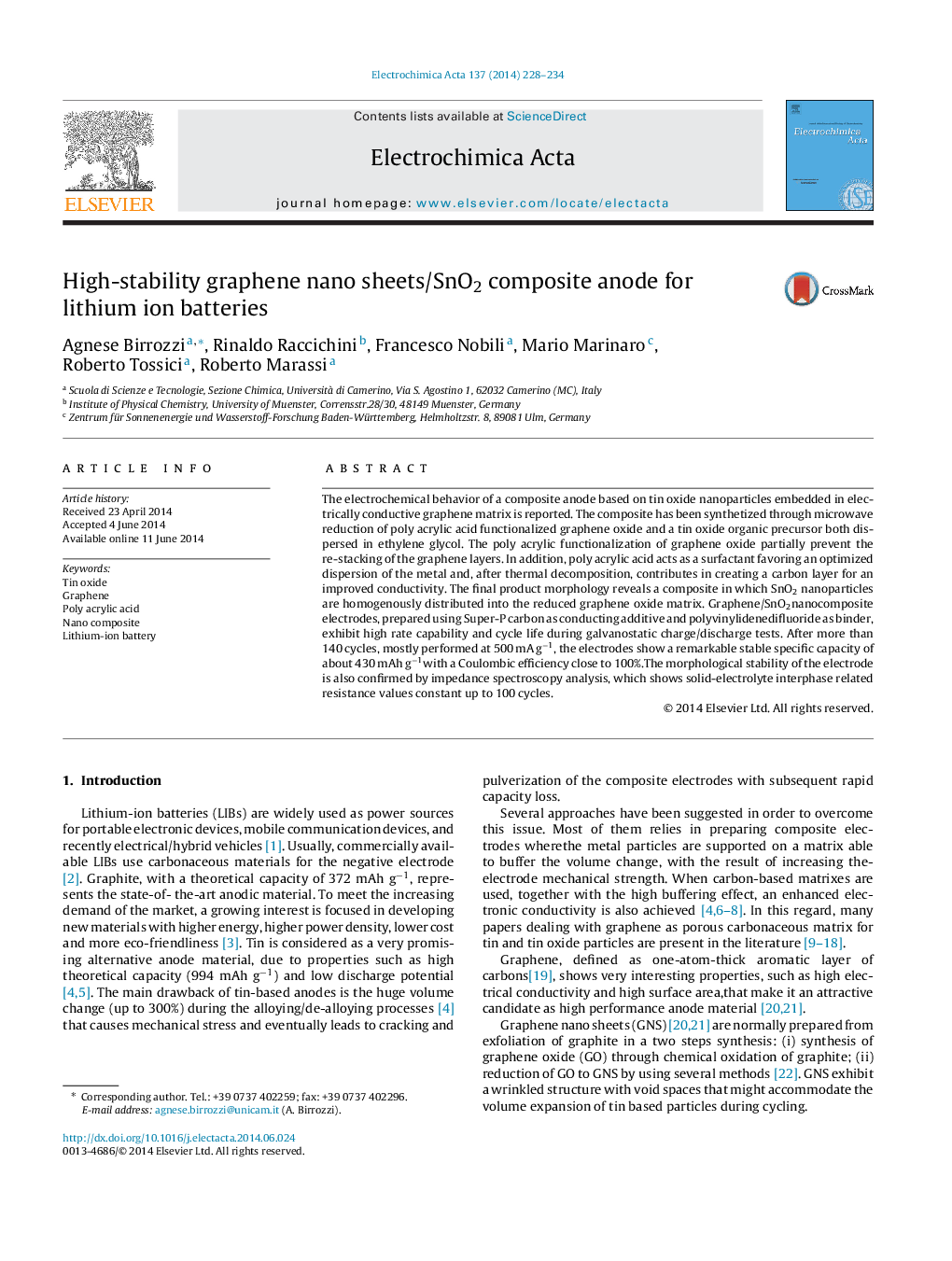| Article ID | Journal | Published Year | Pages | File Type |
|---|---|---|---|---|
| 185568 | Electrochimica Acta | 2014 | 7 Pages |
•We develop a novel synthetic route for graphene/SnO2nano composite (GNS/SnO2).•PAA functionalizationcontributes in creating a favorable morphology of GNS/SnO2.•Outstanding electrode stability is demonstrated by galvanostatic cycles and EIS.
The electrochemical behavior of a composite anode based on tin oxide nanoparticles embedded in electrically conductive graphene matrix is reported. The composite has been synthetized through microwave reduction of poly acrylic acid functionalized graphene oxide and a tin oxide organic precursor both dispersed in ethylene glycol. The poly acrylic functionalization of graphene oxide partially prevent the re-stacking of the graphene layers. In addition, poly acrylic acid acts as a surfactant favoring an optimized dispersion of the metal and, after thermal decomposition, contributes in creating a carbon layer for an improved conductivity. The final product morphology reveals a composite in which SnO2 nanoparticles are homogenously distributed into the reduced graphene oxide matrix. Graphene/SnO2nanocomposite electrodes, prepared using Super-P carbon as conducting additive and polyvinylidenedifluoride as binder, exhibit high rate capability and cycle life during galvanostatic charge/discharge tests. After more than 140 cycles, mostly performed at 500 mA g−1, the electrodes show a remarkable stable specific capacity of about 430 mAh g−1with a Coulombic efficiency close to 100%.The morphological stability of the electrode is also confirmed by impedance spectroscopy analysis, which shows solid-electrolyte interphase related resistance values constant up to 100 cycles.
